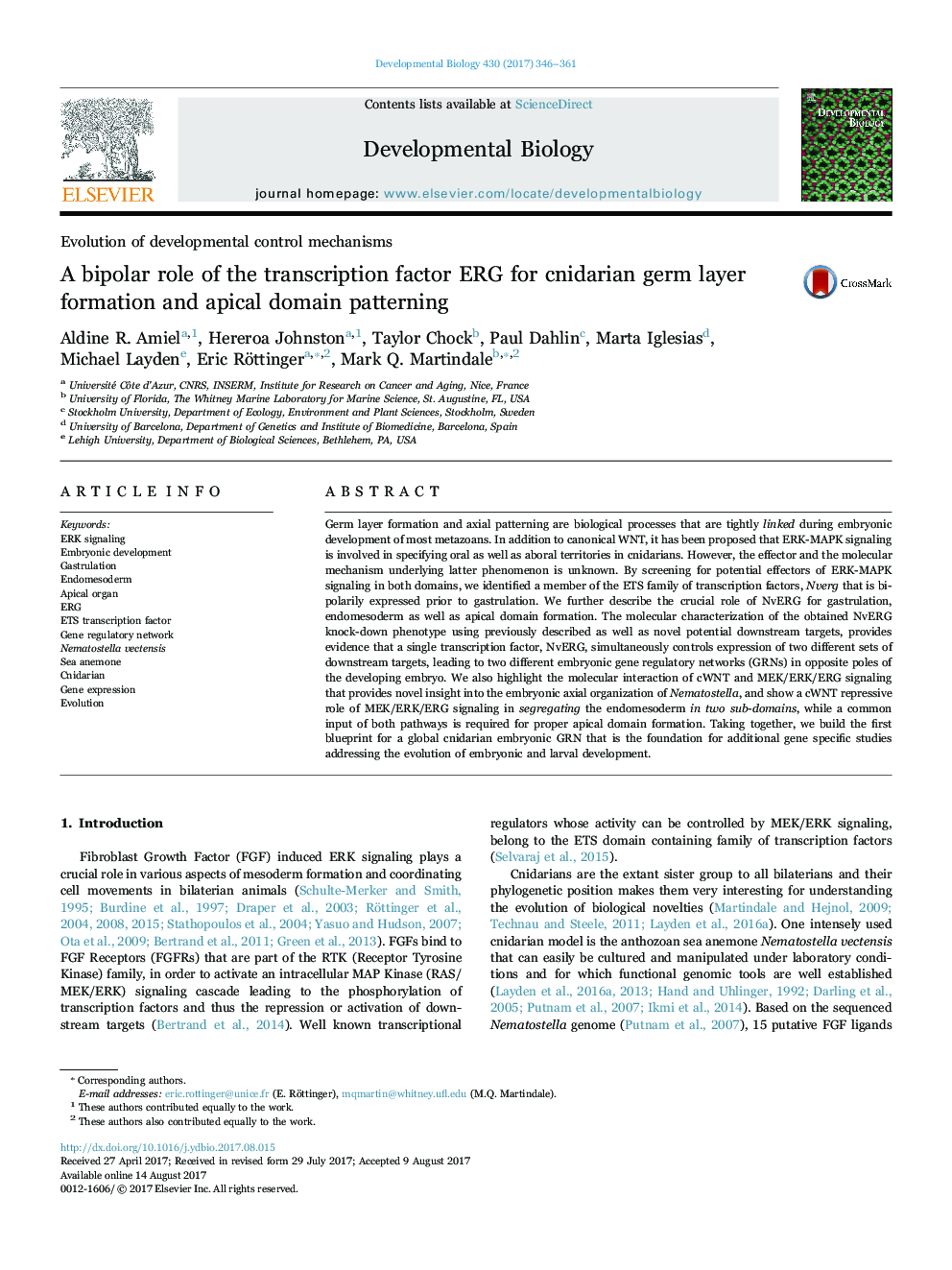| Article ID | Journal | Published Year | Pages | File Type |
|---|---|---|---|---|
| 5531632 | Developmental Biology | 2017 | 16 Pages |
â¢Characterization of NvERG, a bi-polarily expressed transcription factor in cnidarians.â¢NvERG is required for endomesoderm and apical domain formation.â¢Identification of ERG downstream targets, distinctly expressed in both poles.â¢NvERG simultaneously controls two different GRNs in opposite poles.
Germ layer formation and axial patterning are biological processes that are tightly linked during embryonic development of most metazoans. In addition to canonical WNT, it has been proposed that ERK-MAPK signaling is involved in specifying oral as well as aboral territories in cnidarians. However, the effector and the molecular mechanism underlying latter phenomenon is unknown. By screening for potential effectors of ERK-MAPK signaling in both domains, we identified a member of the ETS family of transcription factors, Nverg that is bi-polarily expressed prior to gastrulation. We further describe the crucial role of NvERG for gastrulation, endomesoderm as well as apical domain formation. The molecular characterization of the obtained NvERG knock-down phenotype using previously described as well as novel potential downstream targets, provides evidence that a single transcription factor, NvERG, simultaneously controls expression of two different sets of downstream targets, leading to two different embryonic gene regulatory networks (GRNs) in opposite poles of the developing embryo. We also highlight the molecular interaction of cWNT and MEK/ERK/ERG signaling that provides novel insight into the embryonic axial organization of Nematostella, and show a cWNT repressive role of MEK/ERK/ERG signaling in segregating the endomesoderm in two sub-domains, while a common input of both pathways is required for proper apical domain formation. Taking together, we build the first blueprint for a global cnidarian embryonic GRN that is the foundation for additional gene specific studies addressing the evolution of embryonic and larval development.
